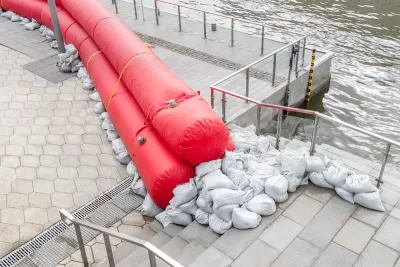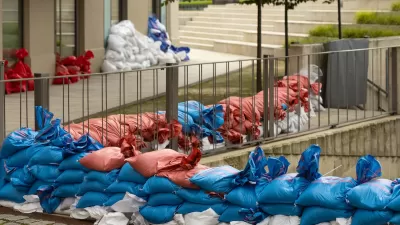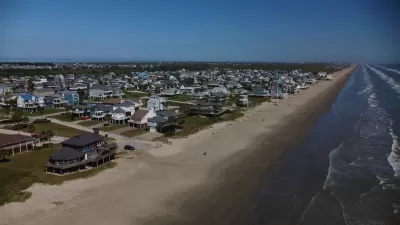New climate and flood models are needed to understand growing flood risks.

A ‘new normal’ of flooding and extreme weather events is prompting cities around the country to reevaluate their water infrastructure and flood risk models, writes Carl Smith in Governing. Smith notes that “floods are the most common and widespread weather-related disasters. Estimates of their annual cost range from $180 billion to $496 billion a year.”
Daniel Swain, a University of California, Los Angeles climate scientist, says “Virtually all of the infrastructure that we have built was built for a climate that no longer exists.” To address this, a new report from the US Water Alliance, Water Rising: Equitable Approaches to Urban Flooding, identifies priority areas for resilience and equity planning and encourages cities to assess their own local challenges and infrastructure.
In Hampton, Virginia, the Hampton Roads Sanitation District (HRSD) produced a report that highlights risks and resources in the region, offering local officials “an opportunity to look at exposure to climate hazards among the more than 150 facilities in the HRSD system and possible floodwater levels now and in the future.”
According to Swain, “Localities must gather and heed this kind of data as they plan for infrastructure improvements.” Mami Hara, CEO of the US Water Alliance, suggests a more regional approach to water infrastructure, such as a “regional resilience entity that brings together water and climate issues.”
FULL STORY: Planning for a Daunting New Normal of Flood Risk

Trump Administration Could Effectively End Housing Voucher Program
Federal officials are eyeing major cuts to the Section 8 program that helps millions of low-income households pay rent.

Planetizen Federal Action Tracker
A weekly monitor of how Trump’s orders and actions are impacting planners and planning in America.

Ken Jennings Launches Transit Web Series
The Jeopardy champ wants you to ride public transit.

Opinion: Transit Agencies Must View Service Cuts as Last Resort
Reducing service could cripple transit systems by pushing more riders to consider car ownership, making future recovery even less certain.

‘Smart Surfaces’ Policy Guide Offers Advice for Building and Maintaining Urban Tree Canopies
Healthy, robust tree canopies can reduce the impacts of extreme heat and improve air quality.

New Jersey Lawsuit Targets Rent-Setting Algorithms
The state of New Jersey is taking legal action against landlords and companies that engage in what the state’s Attorney General alleges is illegal rent fixing.
Urban Design for Planners 1: Software Tools
This six-course series explores essential urban design concepts using open source software and equips planners with the tools they need to participate fully in the urban design process.
Planning for Universal Design
Learn the tools for implementing Universal Design in planning regulations.
Heyer Gruel & Associates PA
Ada County Highway District
Institute for Housing and Urban Development Studies (IHS)
City of Grandview
Harvard GSD Executive Education
Toledo-Lucas County Plan Commissions
Salt Lake City
NYU Wagner Graduate School of Public Service





























